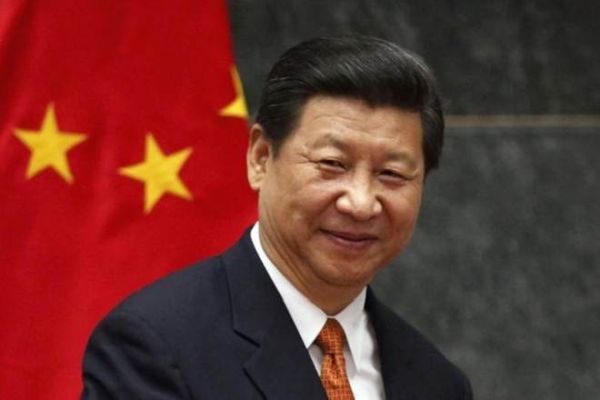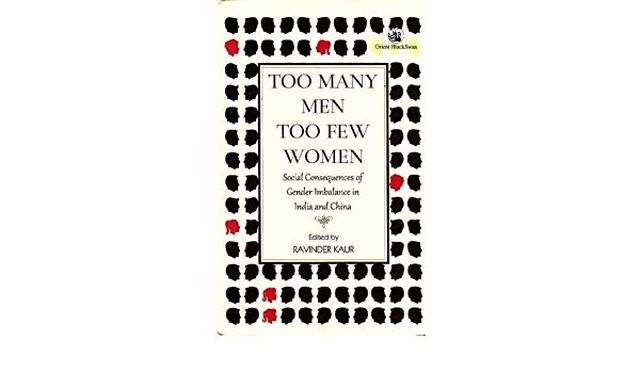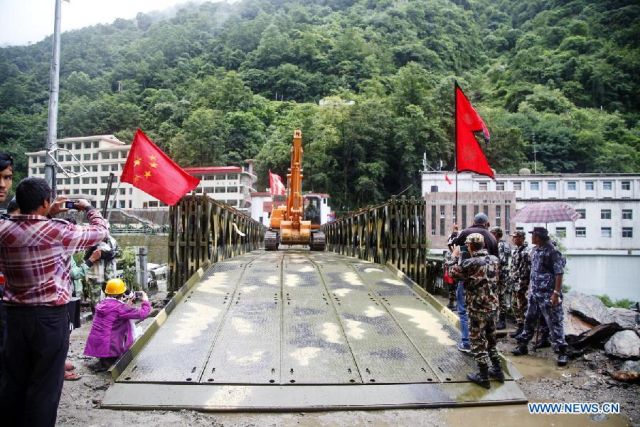
by Editor | May 25, 2021 | Muslim World

Xi Jinping
By Dildar Baykan,
Ankara: Political analysts interpreted China’s pledge to send more than $23 billion in loans and humanitarian aid to Arab countries as a step to increase Chinese influence in the region.
Dr. Altay Atli, a lecturer at Koc University, delivered remarks on Chinese President Xi Jinping’s promise to send humanitarian aid and billions worth of loans to Arab countries during a conference, which was participated by 22 Arab countries, in Beijing.
Chinese interest was actually based on “Belt and Road Project” and China sped up its support to the Middle Eastern countries who were subjected to constant change due to wars and terror, Atli told Anadolu Agency.
“China produces half of its oil and gas on its own, however, the demand is too much. Therefore, China buys half of its oil and gas needs from the Middle East, hence the efforts to have a say in the region,” he said.
Atli pointed out that China was solely focused on the economic aspects of the Middle East policy, however things changed after 2011’s Arab Spring as China found itself isolated from the region in terms of economy.
“China continues its aids and investments to the region during the financial shifts. While doing this, it wants to join the roundtable by having a say in politics and economy of the Middle East, which will be reshaped again,” he added.
Atli went on to note that China hadn’t sent troops or fighter jets to the region despite being on the same page with Russia. “In short, China wants to maintain a presence within the scope of Belt and Road Project, it uses the economic presence instead of military intervention,” he said.
China’s role in the Middle East
The conference was largely covered by the Chinese press as some experts opined that the loan and aid promise “might strengthen China’s role in the region.”
Chinese experts also pointed out that the move should be regarded as normal given that China had a Muslim population of 20 million.
Having established close ties with nine Arab countries via “Belt and Road Project”, China would find more “practical” ways to the current problems in the region, according to Chinese experts.
Security aspect of the Chinese investments
Experts stressed that safety should be the priority in the region, which suffers clashes and civil wars.
They warned that China’s national interests might be imperiled should the oil sources or trade routes are to be cut all of a sudden.
Joost Hiltermann, the program director of the Middle East and North Africa for International Crisis Group, said that China assumed a financial role in the region, while staying away from the political issues.
“If their [China’s] security status puts commercial interest and investments under danger, China, in the end, will have no other option than the military intervention. This will be a distressed period in which Beijing will take some tough decision. Along with some friends, they will also make some enemies,” he asserted.
China’s great investment in Middle East
Chinese President Xi Jinping Tuesday announced in a conference participated by 22 Arab countries that Beijing would pledge more than $23 billion worth loans and humanitarian aid, $91 million of which would be sent to Syria, Yemen, Jordan, Palestine and Lebanon.
“China and Arab countries, in pursuit of modernization, must create synergy to bring out progress strategies,” Xi said, noting a separate $151 million would be pledged for aid projects.
Xi also underlined that Beijing sought to increase cooperation in fields such as renewable energy sources and hydrocarbon. “China wants to join Arab countries with the aim of supporting joint development, being a supporter of peace and stability and advocating equality and justice,” he said.
*Ali Murat Alhas contributed to this story from Ankara
—AA

by Editor | May 25, 2021 | Books
 By Saket Suman,
By Saket Suman,
Book: Too Many Men Too Few Women; Edited by: Ravinder Kaur; Publisher: Orient Blackswan; Pages: 340; Price: Rs 925
Much of the scholarly work on adverse sex ratios or gender imbalance until now has primarily focussed on the identification, patterns and causes of skewed sex ratios, and very little on their consequences. This offering, on the contrary, focuses on their social consequences in China and India — two of the world’s most populous countries — by presenting an empirical work and ethnographic accounts by well-known sociologists, economists and demographers.
At the onset, editor Ravinder Kaur, a noted professor of Sociology and Social Anthropology at IIT-Delhi, highlights that the gender balance in Asia is significantly shaped by the “male biased sex ratios” of India and China. Kaur points out that rapid fertility declines in the two countries, resulting from China’s one-child policy and India’s two-child norm, coupled with son-preference and the advent of sex determination technologies, has contributed to an excess of males and a shortage of females in both countries.
Once the proposition is explained, the respective authors dealing with diverse subjects elaborate on the social consequences of gender imbalance in India and China. Of all possible outcomes and consequences, “The Marriage Squeeze”, mentioned by almost all contributors in the book, comes across as the most striking.
What is “the marriage squeeze” and why are India and China likely to face it in the coming years?
In layman’s terms, marriage squeeze is one of the fundamental consequences of the sex ratio imbalance which leads to mismatch in the “marriageable population”.
“A shortage of women implies a male marriage squeeze, while a shortage of males implies a squeeze against women,” explains Kaur.
As per the assertions of demographers, the possibility of marriage depends on the supply of potential mates, which in turn is influenced by the sex ratio at birth, the population age structure and marriage patterns. Therefore, when “fertility declines rapidly and is accompanied by female-biased sex selection”, a far lesser number of women are born and enter the “marriage market”.
“It is important to note that the effects of the marriage squeeze are likely to be felt more than twenty years after the appearance of skewed sex ratios,” the book points out.
But what is the likely impact of the marriage crisis on left-out men?
The book maintains that due to the economic, social, moral and psychological importance of marriage in both the Indian and Chinese societies, the “shortage of brides” has taken on immense importance in the public imagination, and as the demographers point out, it has become one of the most significant negative impacts of the sex ratio imbalance.
“With age, single men become a subject of ridicule amongst friends who have settled down,” says one of the respondents from a Haryana village, quoted in the book.
In the cultural context of China too, “singlehood is a state of frustration, and even of deprivation”, which in the likely scenario, is expected to have adverse effects on the left-out men. The book also claims that men living in rural areas are likely to “suffer more” as the bride shortage is often exacerbated by “women moving to urban or more prosperous areas”.
Monica Das Gupta’s chapter “China’s Marriage Market and Upcoming Challenges for Elderly Men” mentions that the proportion of never-married in China will be especially high among poor men in low income provinces, which are “least able” to provide “social protection programmes”. Other factors resulting in men remaining unmarried, according to the book, are addiction to drugs or alcohol, disability, and among other factors, social stigma. The marriage squeeze against men, the book notes, can be compounded by geographic factors such as residence in a less-favoured location.
Interestingly, the findings of the book suggest that under conditions of a male marriage squeeze, “women who are similarly disabled or whose reputations are similarly tarnished” are more likely to find spouses than men. At the same time, strictly in the Indian context, the consequences of the marriage squeeze are made worse by the fact that the traditional modes of dealing with bachelorhood are diminishing as the joint family declines and nuclear families become less welcoming of unmarried relatives.
The book finds that the marriage squeeze is also likely to have consequences on dowry and economic behaviour revolving around marriages.
“It is commonly expected that with the scarcity of women, the direction of marriage transactions would be reversed. It is conjectured that in India, dowry would decline, with some form of bride price taking place. In China, the effect is seen in the rise in bride price as men compete for scarce women,” writes Kaur.
So what should be the way forward?
The general view among scholars in the book is that “self correction” of skewed sex ratios cannot be left to happen by itself over a long duration.
“Rather, communities and governments need to take proactive steps to engender an equal value of the girl child. There is also a need to address the negative social consequences of sex ratio imbalance, which will continue to unfold in the future,” Kaur maintains.
(Saket Suman can be contacted at saket.s@ians.in)
—IANS

by Editor | May 25, 2021 | Business, Emerging Businesses, Medium Enterprise, World
 By Gaurav Sharma,
By Gaurav Sharma,
Beijing : A trade war between China and the US – the world’s largest economies – began on Friday as the two sides started slapping additional tariffs on each other’s goods, worth nearly $70 billion, a development that could impede global economic recovery.
As planned, Washington began taxing 818 Chinese goods worth $34 billion early on Friday to punish Beijing for allegedly playing underhand in trade practices and pressuring US companies to hand over their technologies for doing business in China.
Beijing, which denies these charges, was swift in responding in kind after the first tranche of planned US levies on Chinese goods announced by President Donald Trump kicked in on Friday.
“After the US imposed its tariffs, China also took effective measures,” said Chinese Foreign Ministry spokesperson Lu Kang.
Even though neither Lu nor the Chinese Commerce ministry gave details about the scales of tariffs, Beijing has plans to slap punishing levies 545 US products worth $34 billion a year that range from soybeans and lobsters to sport utility vehicles and whiskey.
The duties slapped by the US will make Chinese cough an additional 25 percent on products such as industrial machinery, medical devices and auto parts.
Reacting to the tariffs, the Chinese Commerce Ministry said: “The US has ignited the largest trade war in economic history.
“The Chinese side, having vowed not to fire the first shot, is forced to stage counter-attacks to protect the core national interests and interests of its people.”
The Chinese Foreign Ministry said the US had blatantly violated the WTO rules.
“It will surely impact the global trade order, trigger global market fluctuation and impede economic recovery.” spokesperson Lu Kang said.
“More multinational companies, SMEs and ordinary consumers will be impaired and many industries in the US have realised that it is them that will bear the consequences.”
On Thursday, Trump showed no signs of backing down from his fight and suggested the possibility of tariffs on almost $500 billion more of Chinese goods.
“Thirty-four, and then you have another 16 in two weeks and then, as you know, we have 200 billion in abeyance and then after the 200 billion, we have 300 billion in abeyance. OK?” Trump told reporters aboard the Air Force One.
“So we have 50 plus 200 plus almost 300.”
Following Friday’s development, the Shanghai Composite index fell 1.1 percent, after reaching more than a two-year low this week, reports the Guardian.
Trump and his advisers argue the tariffs are necessary to pressure China into abandoning unfair practices such as stealing intellectual property and forcing American companies to hand over valuable technology, reports CNN.
In addition to the tariffs, the White House is placing restrictions on investment and on visas for Chinese nationals.
The clash with China comes as the Trump administration is also fighting over trade with American allies such as Canada and the European Union.
American tariffs on steel and aluminum imports have provoked retaliatory measures against billions of dollars of American exports.
—IANS

by Editor | May 25, 2021 | World
 Kathmandu : Nepal is willing to enhance cross-border railroad connectivity, infrastructure development, trade, investment and tourism cooperation with China under the framework of the Belt and Road Initiative, Prime Minister K.P. Sharma Oli, said here ahead of his visit to Beijing.
Kathmandu : Nepal is willing to enhance cross-border railroad connectivity, infrastructure development, trade, investment and tourism cooperation with China under the framework of the Belt and Road Initiative, Prime Minister K.P. Sharma Oli, said here ahead of his visit to Beijing.
Oli, who will embark on a five-day visit to China on Tuesday, told Xinhua during an interview that the Himalayan nation is fully committed to implementing the Memorandum of Understanding (MoU) on cooperation under the framework of the Belt and Road Initiative signed with China two years ago.
His government has formed a mechanism to implement projects under the Belt and Road Initiative and various ministries are working for the same target, the prime minister said.
Our two countries have common views on the concept of Trans-Himalayan Multi-Dimensional Transport Network. Based on this broad framework, we want to seek cooperation with China on cross-border connectivity of railway, road, transmission lines and other related areas for mutual benefit,” Oli said.
Nepal has viewed the Belt and Road Initiative as an important development initiative, he said.
The Prime Minister said Nepal has recently proposed some projects in the areas of roads, railway, energy, transmission line for cooperation with China.
While talking about Nepal’s ties with China, Oli said it attaches great value to its relationship.
“China is our immediate neighbour. Our two countries share a long history of friendly relations which are multifaceted and deep rooted.
“Our relations are based on the solid foundation of the Five Principles of Peaceful Coexistence,” he said.
During his visit, Oli will meet Chinese President Xi and Premier Li Keqiang and other senior Chinese leaders in Beijing. He will lead a 100-plus delegation.
This is his first visit to China after coming to power in February.
—IANS

by Editor | May 25, 2021 | World

Prime Minister K.P. Sharma Oli
Kathmandu : Former Nepal Prime Ministers have expressed hope that Prime Minister K.P. Sharma Oli’s upcoming visit to China will be instrumental in further deepening bilateral ties between the two countries.
At a meeting summoned on Sunday evening by Oli, Sher Bahadur Deuba expressed happiness over the upcoming visit, reports Xinhua news agency.
Deuba, who is also the leader of major opposition party in the Parliament, said the visit will be fruitful in serving the national interests of Nepal.
Pushpa Kamal Dahal stressed the need to promote cooperation between China and South Asia.
Jhalanath Khanal stressed the need to establish a strong railroad connectivity between Nepal and China.
Madhav Kumar Nepal advised Oli to utilise the visit as an opportunity to push forward the multi-faceted ties between Nepal and China to a strategic level.
Baburam Bhattarai was of the view that Nepal should seek support from China to develop railroad connectivity projects under the China-proposed Belt and Road Initiative.
Oli’s visit will begin on Jun 19. It ends on June 24.
This is Oli’s first visit to China since he came to power in February.
—IANS





